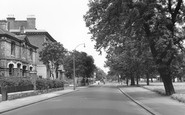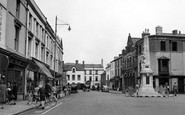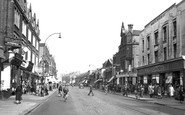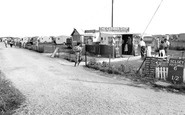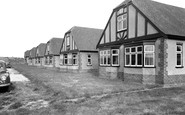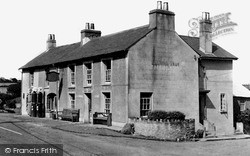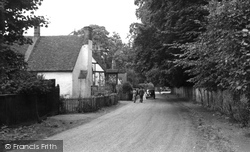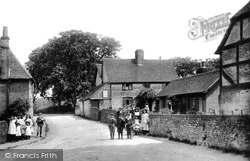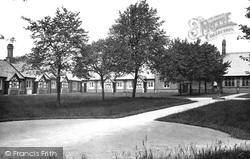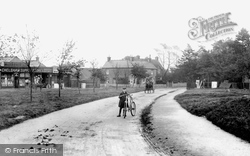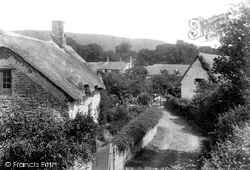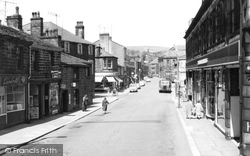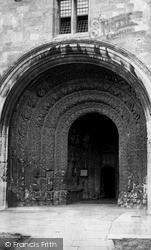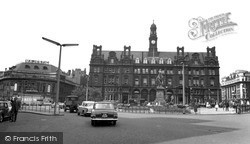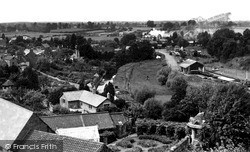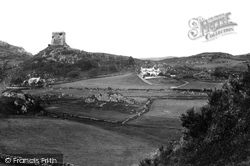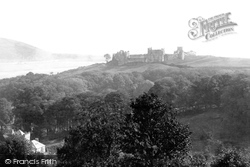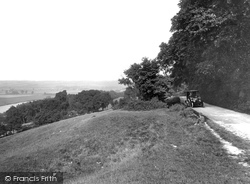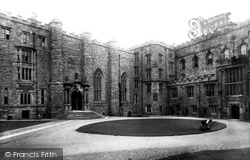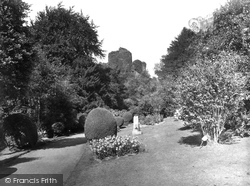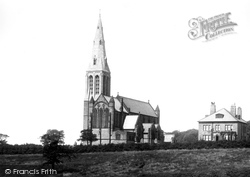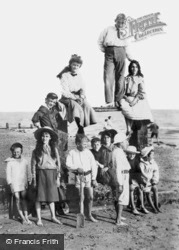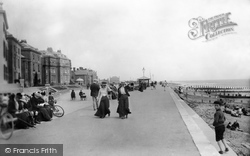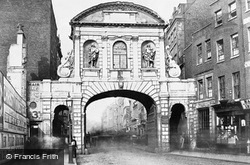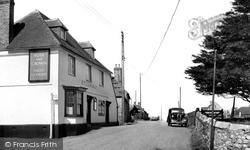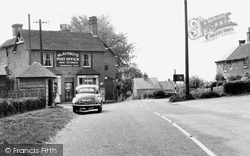Places
18 places found.
Those places high-lighted have photos. All locations may have maps, books and memories.
- Hythe, Kent
- Hythe, Hampshire
- Small Hythe, Kent
- Bablock Hythe, Oxfordshire
- Methwold Hythe, Norfolk
- Hythe, Somerset
- Hythe, Surrey
- Hythe End, Berkshire
- The Hythe, Essex
- Egham Hythe, Surrey
- West Hythe, Kent
- New Hythe, Kent
- Broad Street, Kent (near Hythe)
- Horn Street, Kent (near Hythe)
- Newbarn, Kent (near Hythe)
- Newington, Kent (near Hythe)
- Broad Street, Kent (near Hythe)
- Stone Hill, Kent (near Hythe)
Photos
360 photos found. Showing results 2,601 to 360.
Maps
101 maps found.
Books
10 books found. Showing results 3,121 to 10.
Memories
4,406 memories found. Showing results 1,301 to 1,310.
Son Of Sgt Bruce Krrc
My father was stationed at Chisledon Camp from 1939 to 1942. Living in Littlehampton on the south coast, threatened with invasion, my mother rented the end thatched cottage of the row of cottages which face the railway line ...Read more
A memory of Chiseldon in 1940 by
Secret Garden In Spencer Park
I lived in a prefab in Spencer Park. There is a secret garden in the middle of Spencer Park, the iron gate entrance is just off Windmill Road. We used climb into this garden to go scrumping soft fruit. We were often ...Read more
A memory of Wandsworth in 1950 by
My Grandparents Ran The Post Office
My grandparents, William and Rose Broadway ran the Post Office stores in the late 60's and 70's. I can vividly remember jars of sweets, Grandad boiling his own ham, getting up at 5am to give papers to the ...Read more
A memory of Great Tey in 1968 by
Bridgend
My family moved to Bridgend, as my father had a job with British Rail and could not cope with the shift work and travel to and from Chippenham. We moved to number eight Garfield Avenue and next door to Mrs O'Connell and her daughter and ...Read more
A memory of Bridgend in 1965 by
Longley Road
Does anyone know anything about the Bowra family or Raven family? They lived in Longley Road in the late 1800s and 1900s until 1957. The family consisted of Henrietta Bowra, Leonard, Herbert, Sydney and Kate. Kate had a daughter ...Read more
A memory of Tooting in 1900
The Caravan Shop
I can remember the shop well, both my grandparants had caravans on Mr Wakley's old site (the first gate on the left past the windmill). If the Greenaways shop (that was an old bus parked by the windmill) was shut it meant walking the ...Read more
A memory of Selsey by
The Lido
Oh the Lido, life was so free, we had the basket room, swimming club nights and the Gala at the end of the summer. Cecil, Waff, they don't make people like that now. We stayed out all day, we must have looked like prunes by ...Read more
A memory of Prestatyn in 1968
Radio Bungalows In The Early 1970s
Looking on the website makes the hair stand up on the back of my neck, what great memories I have of stopping at the radio bungalows! And being chased by the swans at the nearby dyke on your way up to the ...Read more
A memory of Trusthorpe in 1972 by
Service
In the early 1940s Mystole House was one of the first places my Regiment used as a billet for one of the Batteries of Artillery as part of the defence of the South Coast Defence scheme on stand by in the event of invasion by the German ...Read more
A memory of Mystole Ho by
Captions
4,899 captions found. Showing results 3,121 to 3,144.
The hotel later provided another service for travellers – BP petrol from the three tall cylinders by the door (left). The building looks the same today, but it has fewer chimneys.
The postmistress, Miss Jisbella Lyth, was a personal friend, and considered it an honour to deal with his voluminous mail.
Fifteen children have been neatly assembled by the photographer in front of the brick and half-timber cottages that comprised this small village, originally called Clandon Abbots.
This clock was originally a project by the Redcar Urban District Council to celebrate the coronation of King Edward VII in 1902.
Parker Almshouses, founded by Robert Parker in 1706, were later replaced by the ones we see here, which are built around a square.
The turning for Glebe Road is by the double-fronted house in the centre, and the National Provincial Bank was later built on the opposite corner.
South of the A39, we climb from lush pastures towards Exmoor and the well-wooded Holnicote Estate and Dunkery Hill, much of which are owned by the National Trust.
track, was looking for residents to commute to work in Burnley, Manchester or other towns.The town stands on the young River Irwell, in the Rossendale Valley—the name Bacup means 'in the valley by the
They were purchased and presented to the abbey by the Earl of Suffolk and Berkshire in 1914.
By the early 18th century, enclosed Cloth Halls in other parts of the county were stealing business from Leeds.A hall for white cloths was opened in Kirkgate in 1711, then replaced by a larger one
The bridges were almost certainly constructed by the monks of nearby Waverley Abbey, which was built in 1128. It was the first Cistercian abbey in England, and was dissolved in 1536.
Progress was hindered by the hostile attitude between the GWR and the Midland Railway, but eventually a ceremony to cut the first sod of the W & GR was performed on 1 July 1865 by the Countess of
It was captured by the English in January 1283 following the death of Llywelyn the Last.
A large-scale reconstruction was begun by the second William de Camville and continued by his son, the second Geoffrey. During this period the gatehouse was remodelled to become a keep.
Much of the best part is now owned by the National Trust, who also own a fair amount of Cookham Dean's open space. Here we see a car toiling up the hill from the Cookham direction.
In later years the staircase had to be supported with columns owing to a substantial increase in downward weight caused by the building of an additional room on the top storey.
Following the move of the gaol and assizes to Bodmin in 1842, the grounds were landscaped and turned into a pleasure park by the Duke of Northumberland.
St Margaret's, built on land given to the town by the local Stanhope family, is constructed in the Early English style and contains twenty interior arches. The spire was added in 1901.
That Worthing has a milder climate than its neighbours is shown by the large quantities of fruit and vegetables which it sends to Covent Garden.
Built in 1826 to designs of Samuel Beazley, the architect of the Theatre Royal in Dublin, they were needlessly demolished by the Council in 1947.
The town of Calne boasts a stunning and attractive Perpendicular church, which was funded by the once- prosperous local cloth trade.
By the 1860s it was causing considerable traffic congestion and there were heated debates in the press about its future. It was finally removed in 1878 and re-erected at Waltham Cross.
Allhallows is in the hundred of Hoo, close by the Thames.
The village also had a well-known post-type windmill, which was sited by the main road. The 14th-century Blackboys Inn has been recently restored after fire damage.
Places (18)
Photos (360)
Memories (4406)
Books (10)
Maps (101)



